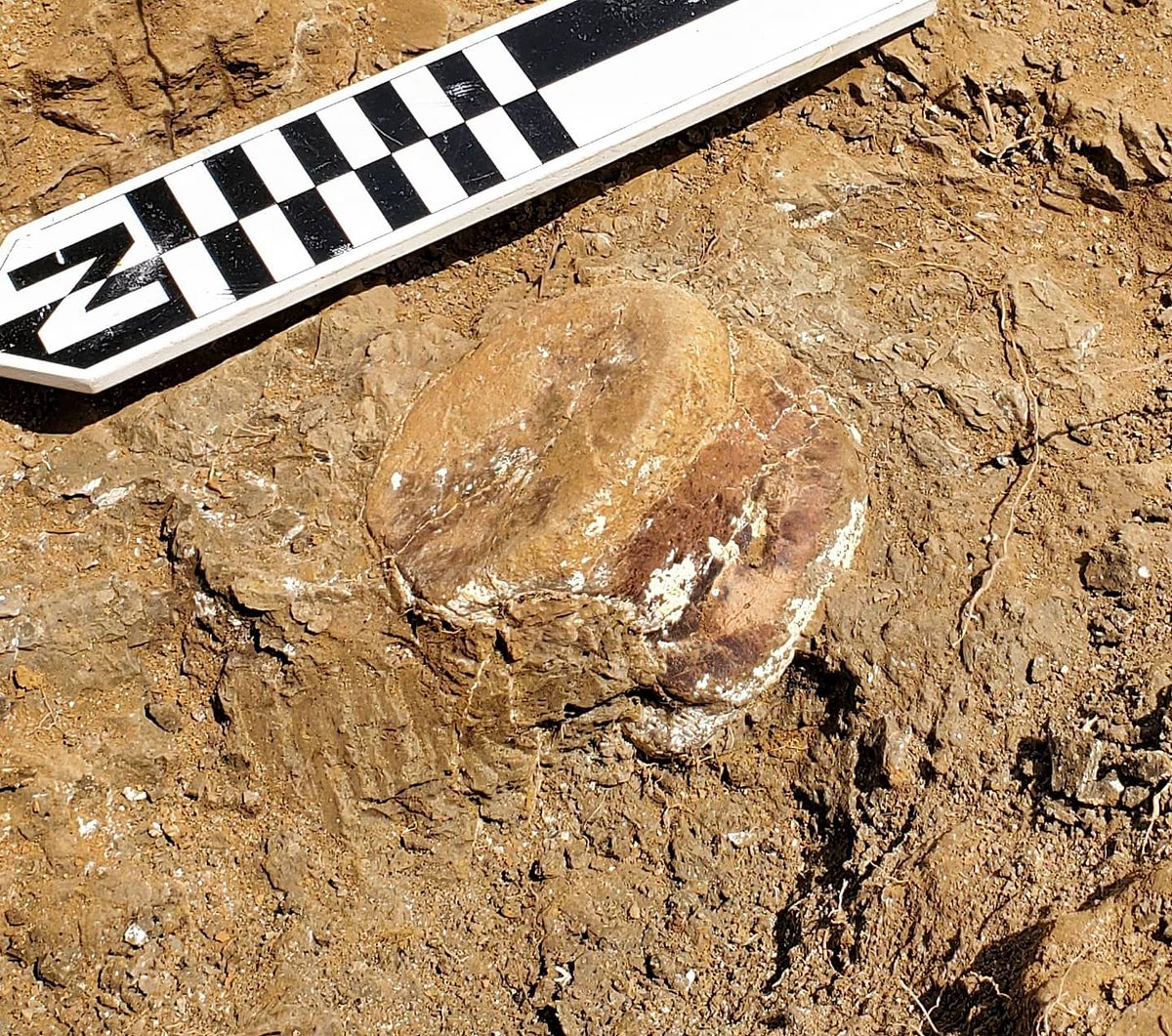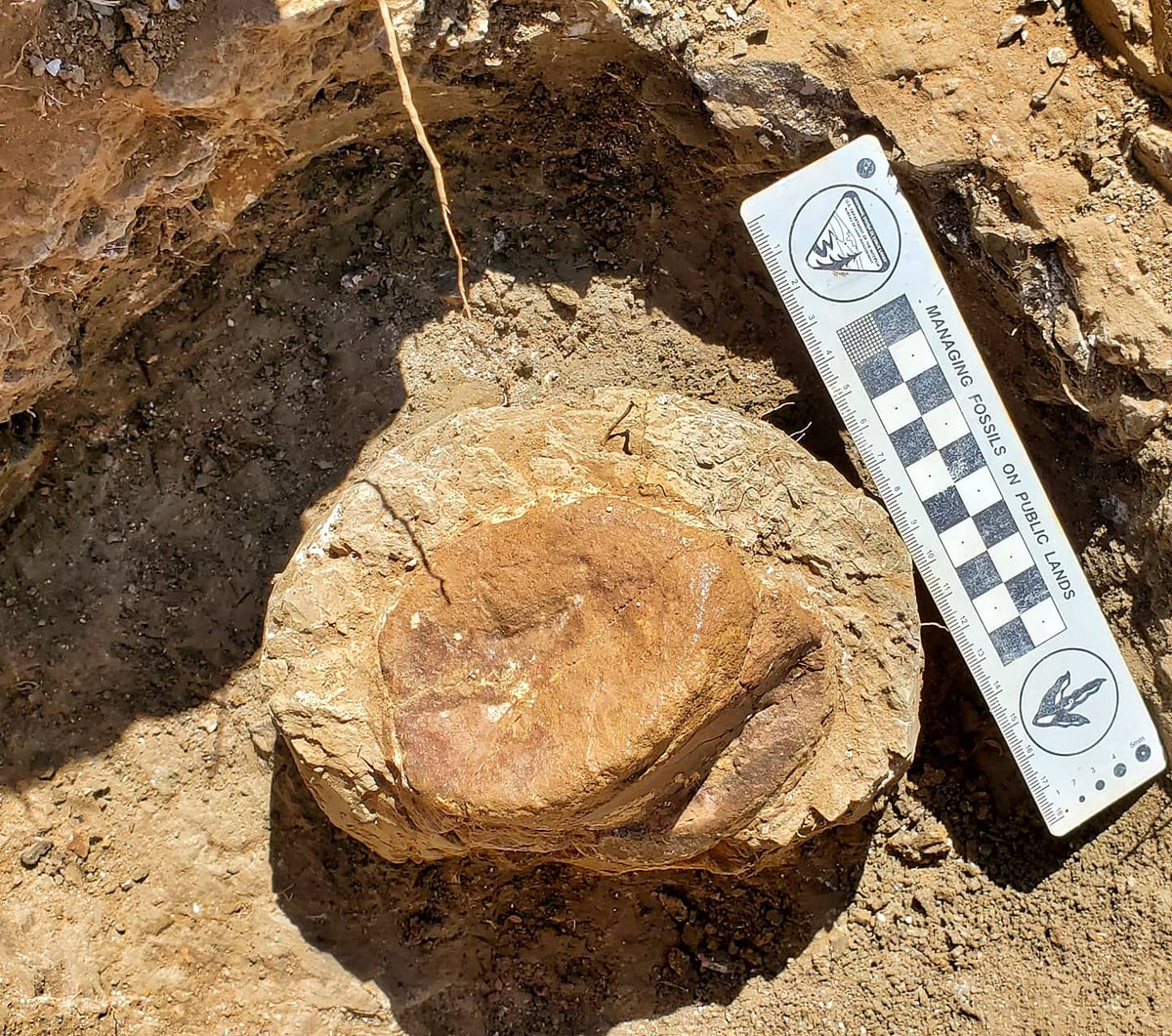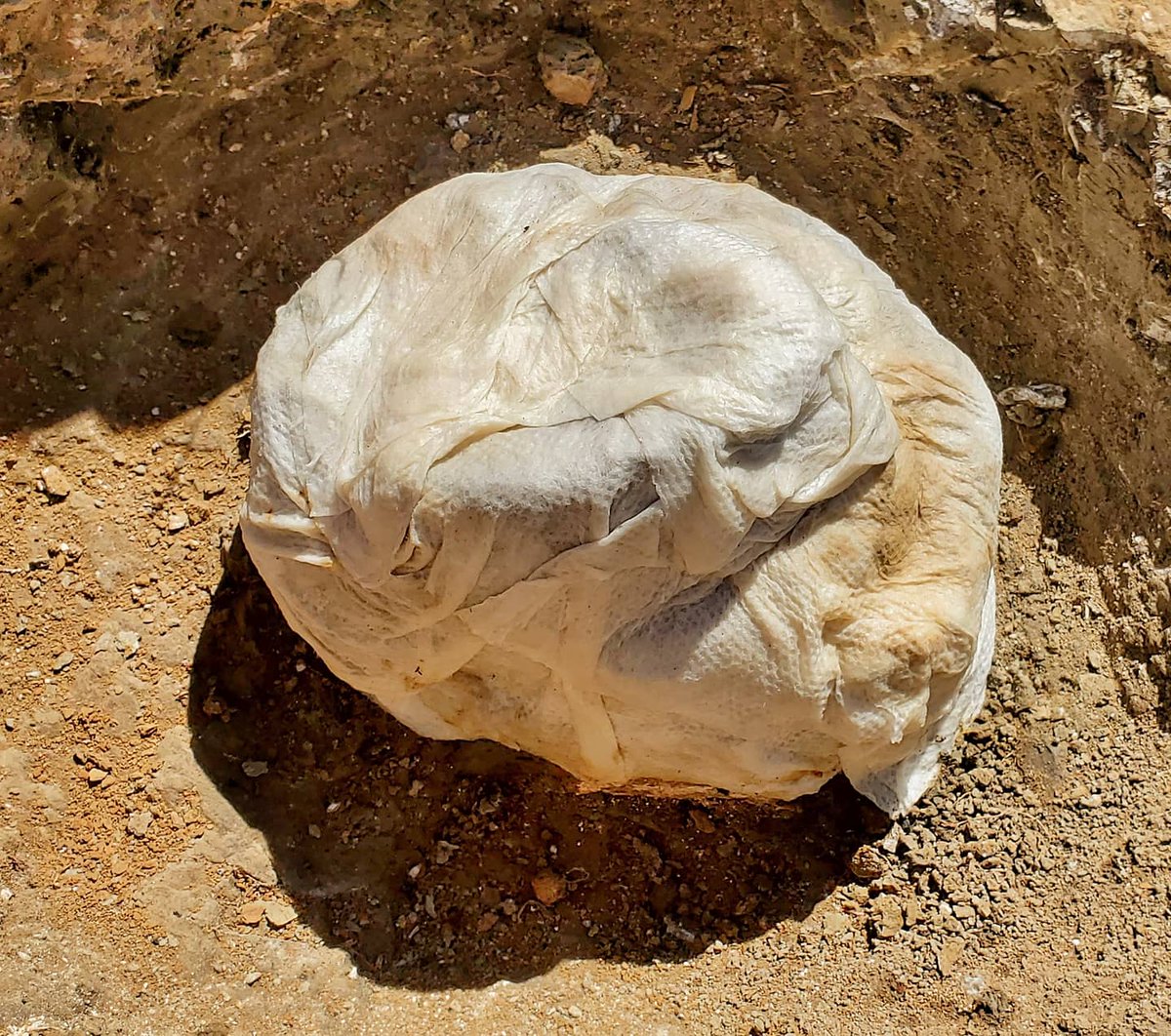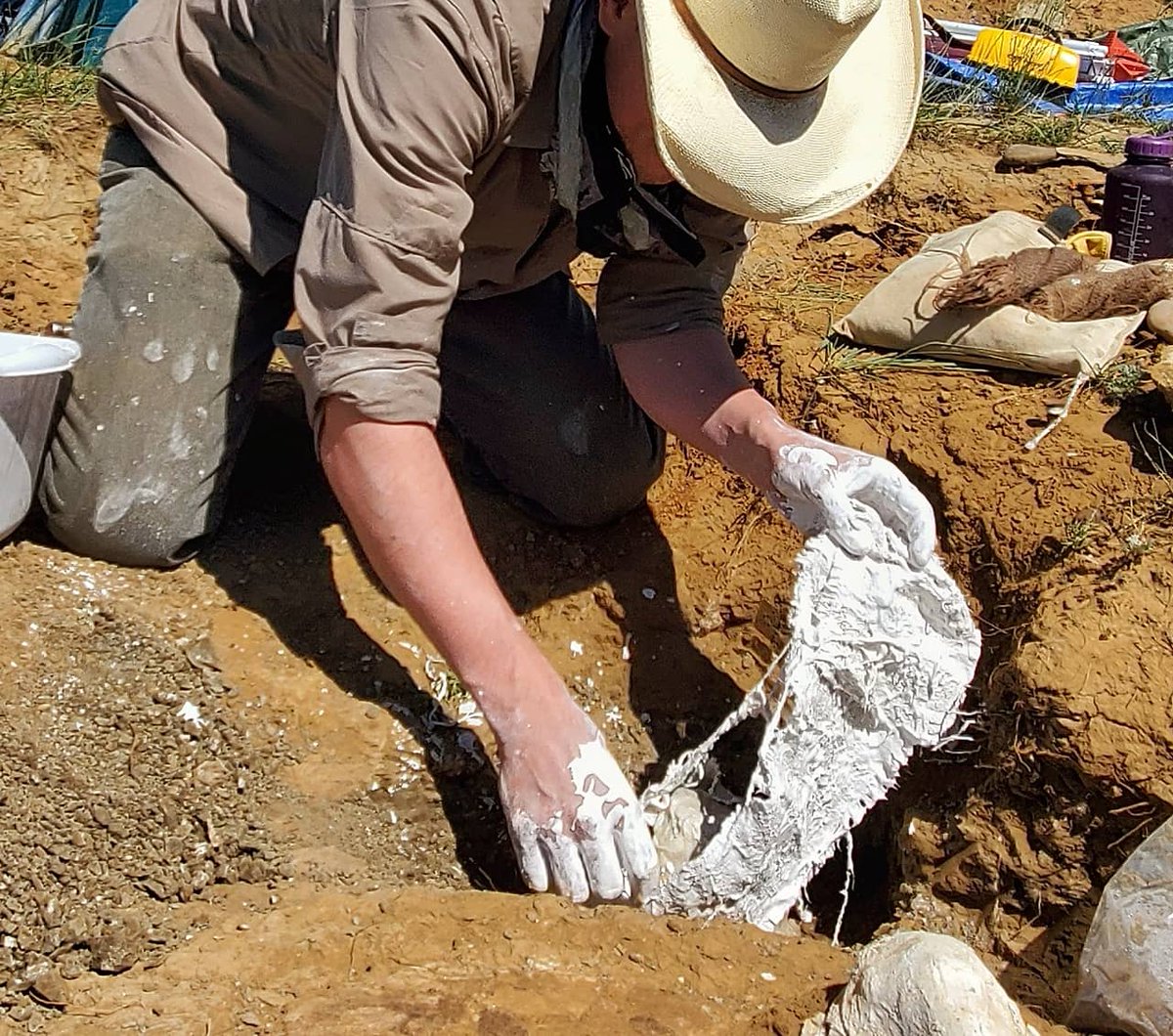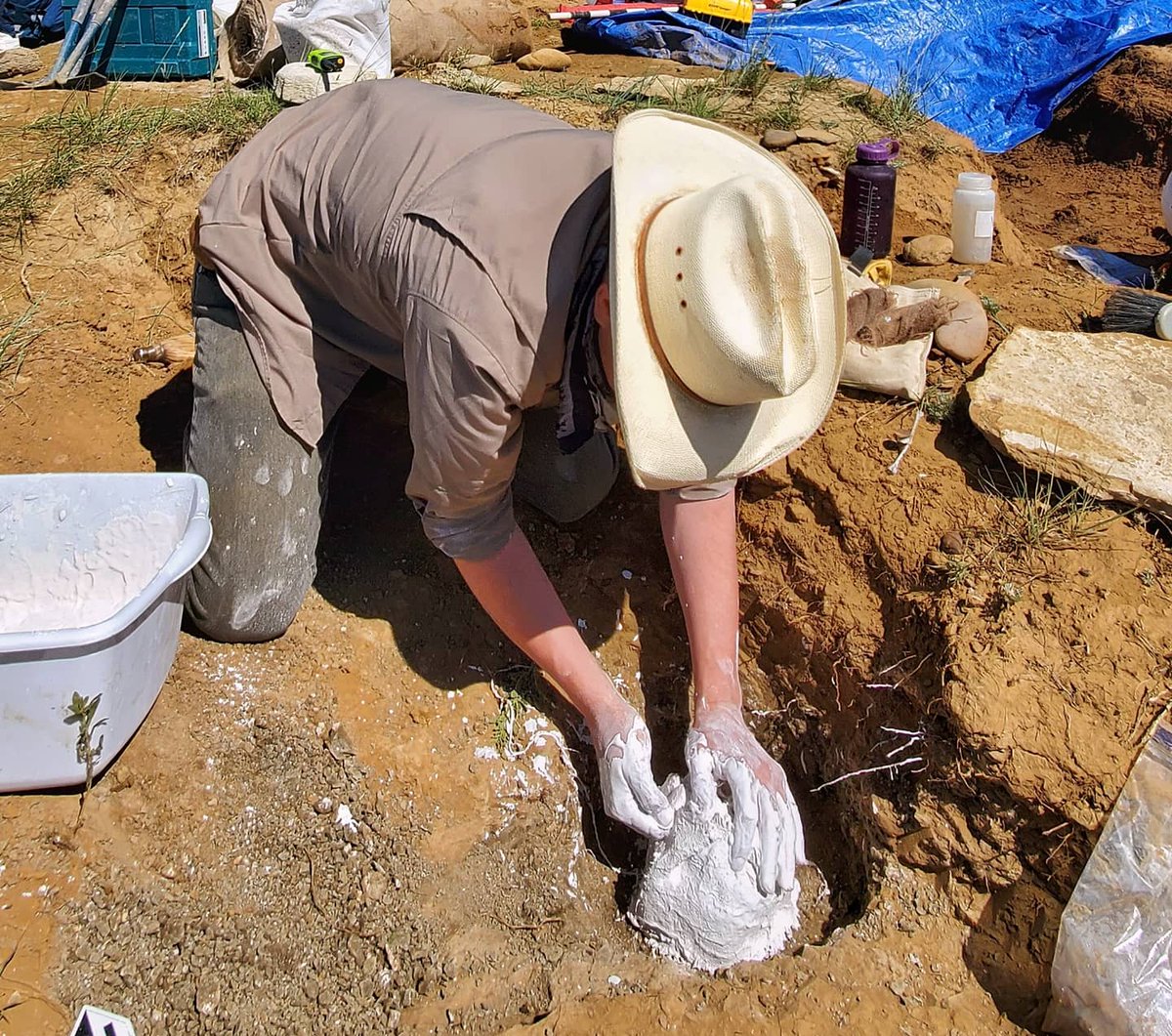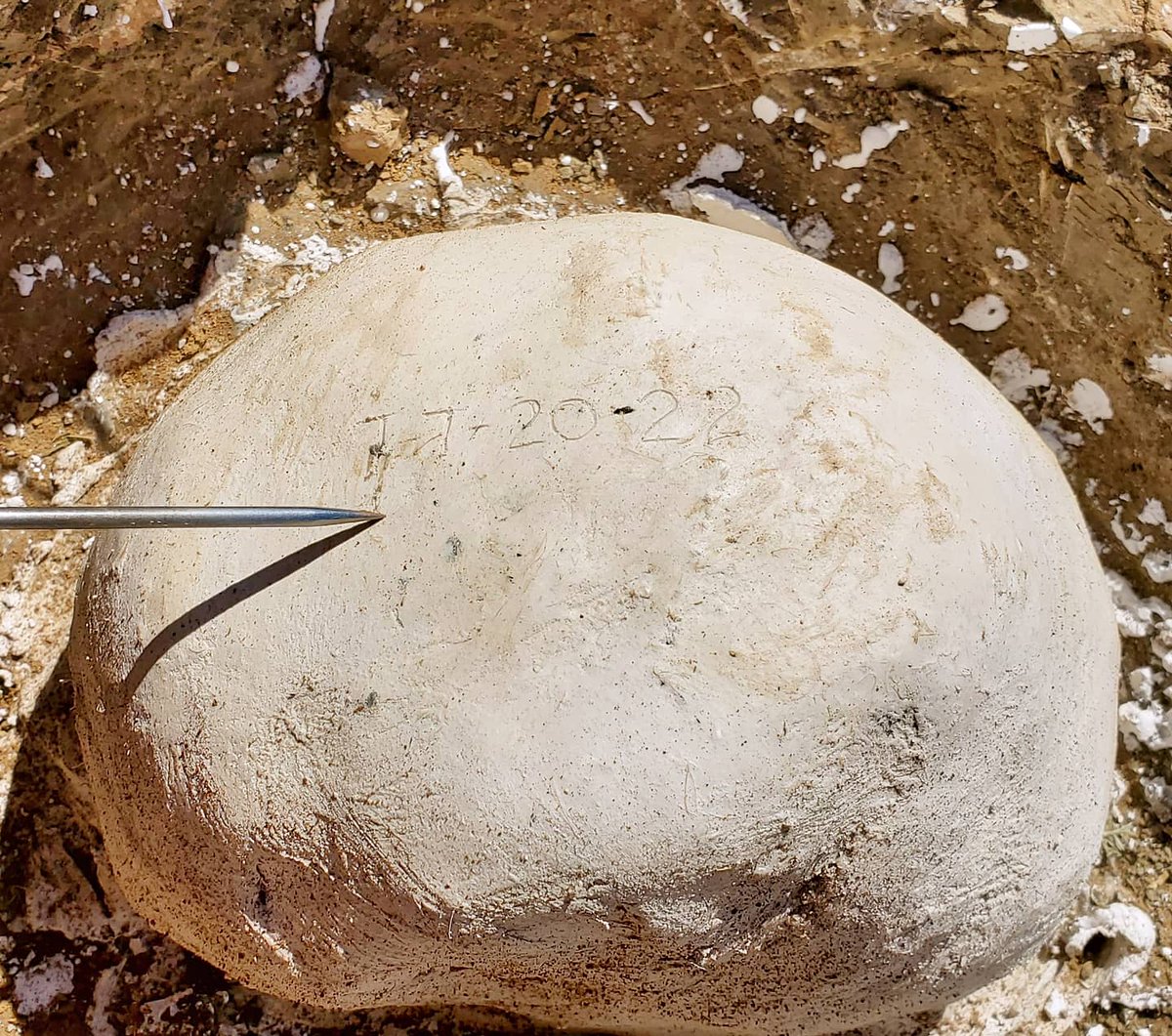It's #FossilFriday! It's been a busy few weeks and I haven't been doing much #scicomm. I want to jump back in with a classic #paleontology technique: the plaster jacket! Here is a step-by-step guide to the time-honored method of collecting dinosaur fossils! [Thread]
1. You found a bone! Awesome! It looks like a tail vertebra from an ornithischian, probably a #hadrosaur. Cool. You assign it a field number, map it, stabilize it with a consolidant (if needed), and photograph it.
2. Time to trench! You carefully excavate a trench around the vertebra looking to see if the neural spine or transverse processes are there. Looks like this is just a centrum this time. Your fossil is now on a pedestal, isolated from the surrounding rock, and ready for plaster!
3. You need a separating layer to protect the bone from the plaster, which would stick to the fossil otherwise (that's bad). Damp paper towels (or TP, or aluminum foil) are applied to the specimen and surrounding matrix. This also makes it easier to remove the jacket in the lab.
4. Strips of damp burlap are dipped into wet plaster. The plaster is mixed thick enough to stick to the burlap, but thin enough to smear around. Think cake batter. Thin plaster won't have integrity and the jacket could collapse. Thick plaster will 'kick' (harden) too quickly.
5. The strips are wrapped around the fossil to the base of the pedestal. Leave slack and walk your fingers over the strip to work it into the surface. Apply more layer(s) until you've got enough support. This vert only needed a couple strips because of its small size.

 Read on Twitter
Read on Twitter![It's #FossilFriday! It's been a busy few weeks and I haven't been doing much #scicomm. I want to jump back in with a classic #paleontology technique: the plaster jacket! Here is a step-by-step guide to the time-honored method of collecting dinosaur fossils! [Thread] It's #FossilFriday! It's been a busy few weeks and I haven't been doing much #scicomm. I want to jump back in with a classic #paleontology technique: the plaster jacket! Here is a step-by-step guide to the time-honored method of collecting dinosaur fossils! [Thread]](https://pbs.twimg.com/media/EdJI_iaUEAApozB.jpg)
